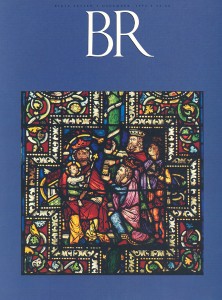Jesus in Four Colors
To what extent are the Gospels historical—or nonhistorical—and what does one do with the nonhistorical parts?

An event in the history of Jesus scholarship is about to occur. In December, accompanied by considerable media attention and a major advertising campaign, a new multicolor edition of the Gospels will be published: The Five Gospels: The Search for the Authentic Words of Jesus.1
The feature of this edition that will attract the most attention is its presentation of the sayings of Jesus in four colors: red, pink, gray and black. The colors represent a descending scale of scholarly judgment about whether a given saying is “authentic” (that is, goes back to Jesus himself), or is more the product of the early Christian movement. In colloquial language, red will mean “That’s Jesus!”; pink, “Sure sounds like him”; gray, “Well, maybe”; and black, “There’s been some mistake.”
Broadly speaking, the Gospels contain two voices. As the developing tradition of the early Christian movement in the last third of the first century, they contain both the voice of Jesus and the voice of the Christian community. A saying printed in red signifies the voice of Jesus, pink is the voice of Jesus beginning to be shaped by the community, gray may contain an echo of the voice of Jesus but is more the voice of the community, and black is completely the voice of the community.
Already a library member? Log in here.
Institution user? Log in with your IP address.

